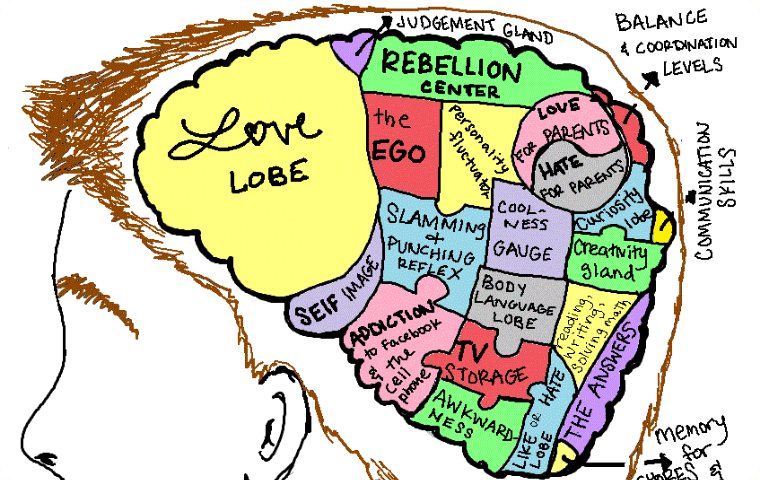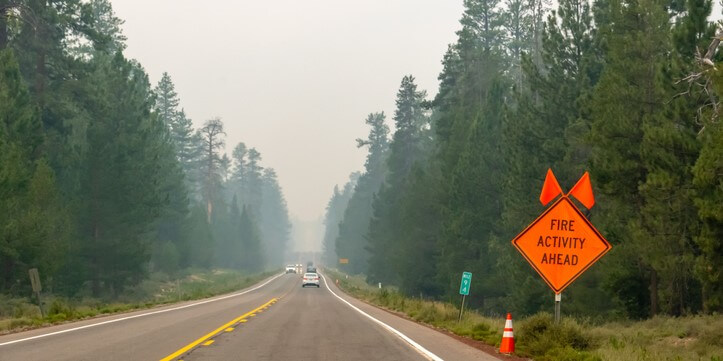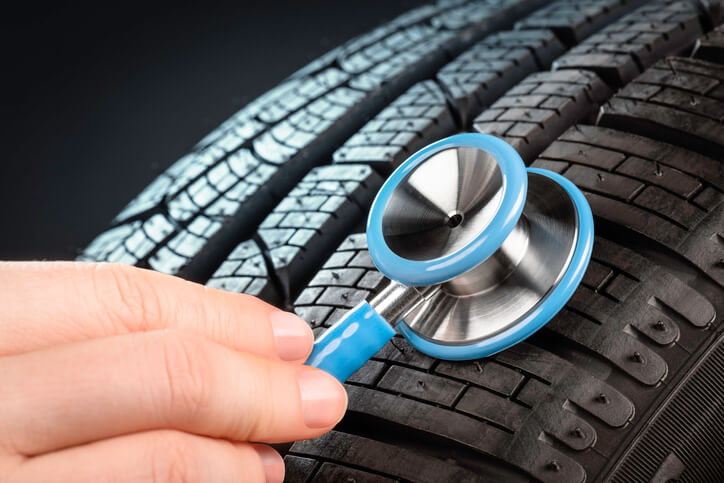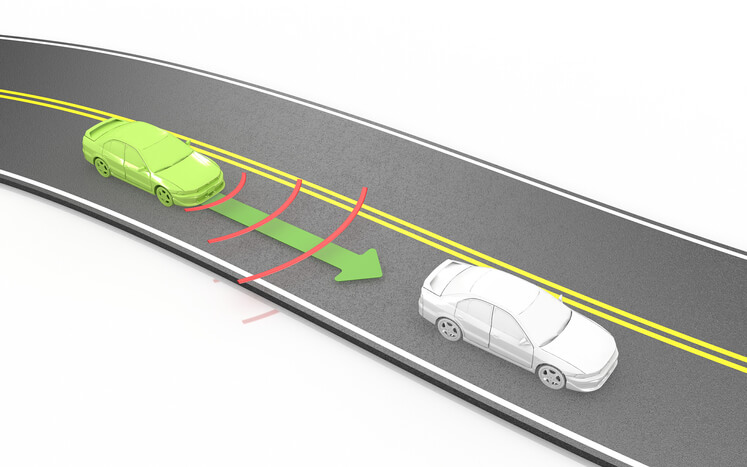Everyone wants to stay safe on the road, but driving isn’t easy. Dangers are everywhere and, as a driver, it’s your responsibility to have a plan to deal with anything and everything you might face on the road.
Making things even more difficult is how quickly you’ll have to react. You won’t have an hour to decide if that huge truck will run a stop sign and hit you. You’ll have a few seconds at most. It’s how you react in the moment could mean the difference between life and death.
What you need is something effective, efficient, and relevant to every situation. Something that will help you determine what is a threat and how you might deal with it. That’s why DriverZ is proud to present the acclaimed S.P.I.D.E.R. Method™, the best way to build the muscle memory and reaction time required to make split-second decisions and maneuvers to keep yourself out of harm’s way.
Let’s go under the hood to understand the mechanics of the method, and then go over 10 tips to make the most of your newfound S.P.I.D.E.R.Senses™.
Master the method
The key to unlocking the power of the S.P.I.D.E.R. Method™ is a simple question you’ll ask yourself any time you encounter a potential danger, “What if?” It may sound simple, but when used properly it’s like a cheat code for safer driving.
When you see another vehicle approaching a stop sign, what if they don’t stop? What if that large semi-truck next to you on the highway doesn’t see you and attempts to change lanes?
Your answers to these “What if’s” will determine the actions you’ll need to take to avoid danger. The best drivers never stop trying to improve, and there’s no better way to do that than by practicing the S.P.I.D.E.R. Method™!
The secret to using it is to follow the anagram in order every time you detect a potential hazard on the road.
Let’s look at a classic example. A cute kid is playing with a ball on the sidewalk ahead of you on a residential street.
S.can: Like a driving detective, you always want to be scanning your surroundings for danger. When you find something that triggers your S.P.I.D.E.R.Senses™, ask yourself, “What if?” What if that cute kid loses control of the ball their bouncing?
P.redict: Once you’ve detected those threats, it’s crucial to determine how they might affect you. What if the ball rolls out in front of your car? What if the child decides to chase after it?
I.dentify: Once you’ve answered some of your “What if” questions about what’s likely to happen, identify your strategies to deal with potential risks. Should you begin slowing down if the kid loses control of the ball? Should you move over in your lane to give them extra space, just in case?
D.ecide: Once you’ve identified your options, choose the one that will provide the most reliably safe outcome. Maybe it’s best to slow down and make sure the kid keeps control of the ball as you pass, but also be ready to brake should the worst happen.
E.xecute: Now, it’s time to make your move. Keep tabs on the kid as you drive by slowly, knowing the entire time that you’re ready to brake if you need to.
R.eflect: Once you’ve completed your maneuver and you’re in a safe situation, reflect on your choices. Did the “What if” questions you asked yourself help and make sense? Did you accurately and adequately predict hazards? Did you identify and execute the right plan to avoid them? Could you do something better next time?
One of the real secrets to safer driving is constantly evaluating and reevaluating your performance. Great drivers never stop working to improve, and there’s no better way to become a safer driver than mastering the S.P.I.D.E.R. Method™.
Making the method work for you
Now that you’ve cultivated your S.P.I.D.E.R.Senses™ and acquired your “What if” cheat code, here are 10 tips on how to use the acclaimed S.P.I.D.E.R. Method ™ to keep you out of harm’s way:
1. Scan with a plan — You can’t scan and predict if your eyes aren’t covering the proper ground. In general, you’ll want to be scanning the area 12-15 seconds ahead of you. This distance is equal to 1-2 city blocks and will leave you enough time to react.
2. Don’t linger — It’s essential to utilize your central vision, your line of sight directly ahead of you, and monitor your peripheral vision. While doing so, you never want to fixate on any one thing for too long. Make quick, concise visual checks of areas around and in front of you, and don’t forget to check on your dashboard instruments!
3. Don’t burst your bubble — Your safety bubble, think of it as a sphere of safety extending 360 degrees around your vehicle, is a key to safe driving. Maintaining adequate distance between yourself and any potential hazard is critical.
4. Watch the weather — Understanding your driving conditions is crucial. Rain, snow, ice, and even wind can profoundly affect your vehicle, your fellow drivers, and the road itself.
5. Come correct — You need to know that your vehicle will perform when you need to avoid danger. From your brakes and tires to your windshield and wipers, every system on your vehicle needs to be in working order to give yourself the best chance to stay safe.
6. Know thy vehicle — While you want to make sure to keep yours in tip-top shape, every vehicle has its quirks. Do you have one of those cars that pulls a little to the left? What about an old engine that might take a bit extra oil every few weeks? Understanding the particulars of your vehicle will help you make the right decision when it matters most.
7. Know thyself — Your mental state is just as important as the condition of your vehicle. Driving in an emotional state is dangerous and could take additional risks or fail to identify hazards. Don’t be afraid to find a safe space to park and take a breath if needed.
8. Worst case — When identifying and predicting potential problems, it’s important to always factor in the worst-case scenario. Though potentially less likely to happen, these situations can carry the most severe consequences, so always allow for the worst.
9. Don’t panic — While it’s vital to anticipate danger, you must find a way to do so without anxiety. Keeping track of everything behind the wheel can feel overwhelming but try to stay centered and calm. A little tranquility goes a long way.
10. We’re talking about practice — Mastering the S.P.I.D.E.R. Method™ is a great way to keep yourself safer behind the wheel, but only if you work at it! Make it a habit to ride with S.P.I.D.E.R. on every drive you take.
Whether you’re a new driver anxious to hit the road or familiar with life behind the wheel, the S.P.I.D.E.R. Method™ is one of the best tools to build muscle memory, reaction time, and the safe driving skills to keep you safe for life.
You can check out the DriverZ Virtual Coach™ for access to S.P.I.D.E.R. Driver’s Ed, to level up your S.P.I.D.E.R.Senses™ even further.
The safest drivers never stop finding ways to improve. Remember, becoming a safer driver is a journey, not a destination, so buckle up and enjoy the ride!


















